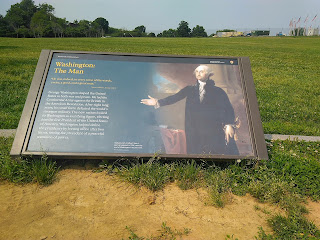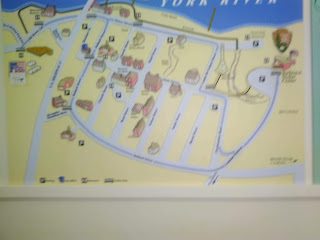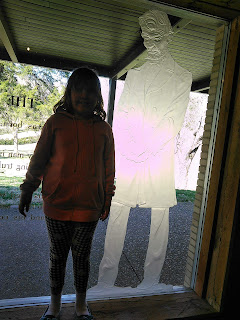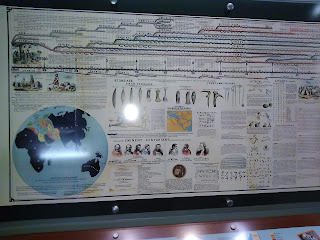One of my favorite things to discuss is the environment, and another is technology, so I am very happy when I can talk about both things at the same time. Many students have asked questions about my
PHEV (plug-in hybrid electric vehicle), so this blog post is an attempt to answer some of the questions.
I know that
EV's (electric vehicle) still are a little too expensive for some people, and they are still not popular everywhere, but I think that will change in the next ten to twenty years.
Here is a history of the electric car. It goes further back than you might think, but the early EV's all lacked one thing, range. Then along came
Tesla, which manufactured a car that could go as far as most ICE (internal combustion engine) cars.
Until Tesla, if someone wanted an environmentally friendly car, they had to settle for a hybrid, such as the
Toyota Prius. A hybrid car uses electric motors to make the car move when at slow speeds. An ICE car burns a lot of fuel to get a car moving from a complete stop. But an electric motor is perfect for getting a car moving from a complete stop, because it provides instant torque. And in a hybrid, the ICE isn't usually running when the car is at a stop, but the ICE starts after the car gets moving.
Hybrid cars use an extra battery that is dedicated for use with the electric motor. The battery is only recharged when the ICE is running. Owning and driving a hybrid is just like a normal car. A PHEV is a combination of an EV that must be plugged-in to recharge the battery, and a hybrid car. A PHEV uses all the same technology as the hybrid, including a dedicated battery for low speeds, but it also has an extra battery, that does not recharge by the ICE, but instead has to be plugged-in and is used exactly like an EV.
There are many PHEV's on the market, with varying size batteries for EV mode. My car has a 7.6 kilowatt battery for EV mode. The industry standard for plugs is the J-1772, but some use a different type of plug, such as Tesla.
There are different levels of charging. The most common are level 1 & 2. A level 1 charger uses 120 volts, while a level 2 uses 240 volts. My EV battery takes about 4.5 hours to recharge using my level 1 charger at home. Most EV owners, that have much larger batteries to recharge, will have a level 2 charger installed by an electrician at their home to recharge their battery in half the time.
PEV's
in the United States are mostly concentrated on the west coast, the northeast, the great lakes region, and Florida. California has strict emission laws. For most of the U.S., the convenience of fueling, and range are the two major factors in buying a vehicle, but also,
trucks are very popular, because of their size and variety of uses. Many homes will have two or more vehicles, so if they are in a city, one of them will probably be an economy car with good gas mileage.
Because I work at home, I only use my car for short drives in town, such as to my daughter's school, the store, or to church. I very rarely use all of the power from the battery, and can easily recharge overnight at home.
J-1772
120 volt - level 1 charger
The average cost for me to recharge at home is about $6 / month.
This model of car was originally built with only an ICE, and later they also sold a hybrid version. The hybrid version puts the extra battery that is needed in the place of the spare tire. They include a portable 12 volt air pump, that has a tire sealant, with the car, to replace the need for a spare tire. When they added the PHEV model version, they had to find somewhere to put another battery, so they put it in the cargo area of the vehicle. This does take away some space in the back of the vehicle.

All hybrids use an ICE to recharge a battery that is used to provide power to electric motors at slow speeds. There are some models of EV that use a gas powered generator motor to recharge. These are called,
'range extender EV's'. All PEV's and hybrids also use something called
regenerative braking, that when either the accelerator is no longer being used, or if the brake is used, the electric motors work in reverse, converting the motion of the wheels into electric power to recharge the battery.
The biggest concern people have about PEV's today is where to plug-in and recharge, because it isn't as convenient as refueling. Tesla has a
'network' of chargers to recharge their cars. And for all the other cars that are not Tesla and use their
special plug, we have a good number of places to recharge, but there still aren't enough, and for right now, they are mostly only found where PEV's are more popular. A company in Canada, that is in the gas station business,
is experimenting with installing PEV charging stations at their gas stations. There is also a movement, by PEV owners,
to setup a network using a phone app, to share their private, home charging stations. Since most people have some sort of charging station at home, this would dramatically increase the number of charging stations, and the owners can also make a little money. There are even some charging station that can
wirelessly recharge specially equipped EV's, although this is very rare, and the technology to do so is not very efficient.
As far as being environmentally friendly, there have been many debates that argue whether EV's are better for the environment. First of all, mining the raw materials needed to produce the batteries is
damaging to the environment. The techniques for mining these materials are improving, and becoming more efficient, and thus lowering the cost of producing batteries, but that doesn't mean it is less damaging to the environment. Sometimes EV batteries need to be replaced, and they are not cheap, but with reduced mining cost, increased production, recycling, and improved battery technology, replacement cost are coming down, and becoming much less of a problem.
Secondly is the concern for where the power comes from to recharge.
Most of the world still uses fossil fuels to provide energy. If the auto industry continues moving towards producing EV's only in the future, there will be a higher demand for energy. In order to be more environmentally friendly, there will need to be an equal movement to get energy from
renewable sources. Tesla is not only in the business of making EV's, but they also produce solar panels. Some Tesla car owners use Tesla solar panels for their homes, and thereby are recharging their cars at home using
solar energy.
Safety is another big concern. But safety should be something that everyone considers anyway when buying a car.
The truth is, EV's are probably no less, or no more safe than most ICE cars. There are some ICE cars that are less safe than others. And I would say that you get what you pay for, but sometimes I think that some cars are way overpriced. Let's face it though, cheap is cheap.
Tesla is famous for it's
'Autopilot'. But there are other manufacturers with varying levels of some sort of
autonomous driving. In the past, they said we would have flying cars, and we do, but not in mass production for use by the masses of people around the world. So now they are saying that in the future, we will have self-driving cars. I think that this will turn-out to be just like the flying car prediction, not for everyone, everywhere.
Let me get back to talking about the present or near future, and some things that are more practical when considering EV's. One student wanted to know about maintenance, repairs, and insurance.
I'm going to talk about maintenance and repairs together. For an EV, that does not have an ICE, clearly there are fewer moving parts and no need for oil changes,
but there is still some maintenance. Just like ICE cars, some of this maintenance needs to be done by a mechanic/technician that knows what they're doing. EV's are more complex, with lots of things being computer controlled, even more than a modern ICE car. Finding a qualified technician to work on an EV is difficult right now, because it is still fairly new technology, and not widely popular, yet. For me, because I live in a small town, my local dealership doesn't have anyone that can work on my car, yet. So, I have to drive about 90 miles to the nearest place that can work on it.

As far as insurance cost, I think it is not much different than considering insurance for a normal car. The insurance company looks at the drivers personal information, driving history, and then considers the year, make, model, and so forth, about the car. My insurance cost did go up about 40%, but that is because I went from a paid for 2007 car, to a financed 2017 car.
I would suggest the biggest thing to think about if you might want to buy an EV is still the range. How far do you normally drive to work, school, church, the store, and back home each day? What ever the longest distance is to drive where you need to go and back, should be less than the EV can drive before needing to be recharged. The longest I drive on average to church and then maybe to the store, is around 10 miles. Double that to get me back home, and it is less than the 22 miles I can drive in EV mode. Then I plug-in and recharge in less than 4.5 hours. It is always ready for me the next day.

Something else to think about before getting an EV is the weather. Just like lowering the temperature of water slows the movement of the molecules to form ice, lower temperatures slow the movement of electrons in batteries, reducing their efficiency and effectiveness, resulting in less range. In ideal warm weather conditions, my car will go 22 miles in EV. But in freezing temperatures, the range is cut in half, to about 11 miles.


I really enjoy my PHEV. The more I use the EV mode, the less gas I need to buy. And when I am on long road trips, the hybrid mode gives me an average of 40 miles per gallon. One of the things I like most about my new car, is that it is connected to my smartphone, allowing me to monitor and control several functions of the car. I can remotely lock, unlock, and start my car from anywhere. I can program a time I want to leave, and the temperature I like it to be inside the car, so the car will automatically adjust the interior temperature so it is at the temperature I want when I am ready to leave. I can even see a location of my car on a map on my phone. If I wanted to, I could even program the key so if I let someone else drive the car, they could not exceed the speed limit. And the key itself is also one of my favorite parts of the car. I never have to take the key out of my pocket to unlock, lock, or start the car. This means no more laying the keys down and losing them, or locking them in the car.









































































































































































































































































































































































































































































































































































































































































































































































